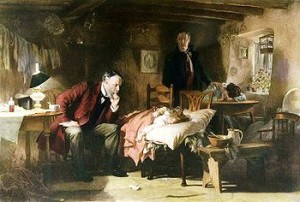
So what makes us think that we can teach medicine by looking at art? The numbers of those who have sought to measure it. Museum field trips are a legitimate educational tool because there are associated metrics. Students who complete Training the Eye are able to make 40% more clinical observations than other students. Then there’s the extrapolation that these doctors will make better decisions.
I need to know more here. Tell me what it is to ‘learn medicine’ and then we have someplace to start. And the medicine applied and practiced in just 10 years can barely be imagined by those charged with creating today’s curriculum.
And I have to wonder if we can we learn medicine by:
- Reading widely
- Writing reflectively
- Playing with Legos
- Being a patient with a chronic disease
- Maintaining powerful personal relationships.
- Failing at relationships
- Spending a significant amount of time living in another culture
- Cultivating spirituality
- Learn to play a new musical as an adult
- Standing by during the final moments of a friends life
What parts of the human experience belong as structured, measureable elements of medical education?
Museums are amazing. Art can have remarkable effects that impact the way we see the world and relate to people. I just wonder if measuring the abstract elements of the human experience may be the wrong approach in validating this kind of visual literacy. But this is the problem of a system that demands numbers and pie charts, not one of Alex Miller’s unique efforts to move the chains forward.
Perhaps we should just admit that the medium of art and broader life experiences create doctors with balance and equanimity. And some things just can’t be measured.
(Note to self: put Alexa Miller on my list people to have to dinner.)